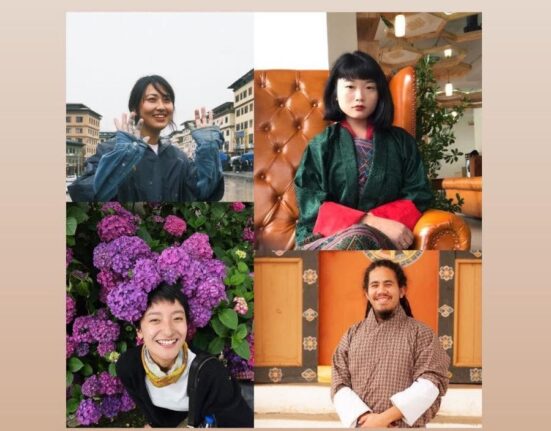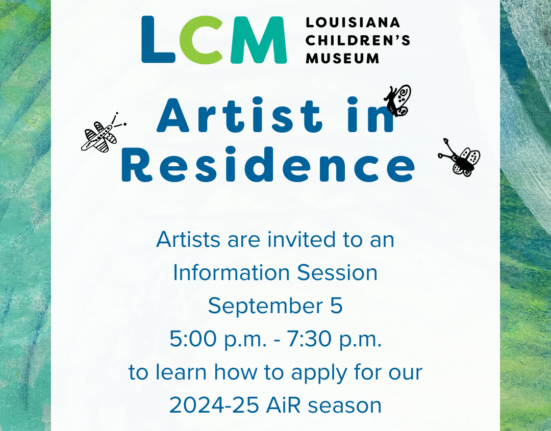(Editor’s note: This article is part of an Advance/SILive.com Black History Month special series, “Impact & Excellence,” that profiles Staten Islanders and organizations making important, lasting impact in the arts community. Do you have someone you would like to nominate for a profile? E-mail their name and a brief nomination to tips@siadvance.com.)
STATEN ISLAND, N.Y. — Small and mighty. That’s how Rashida Ladner-Seward describes the Universal Temple of the Arts (UTA), a grassroots community-based organization that has supported artistic development in underserved Black communities on Staten Island since 1967.
Today, UTA, based in New Brighton, works with seasoned professional artists to provide Staten Islanders instruction and exposure to an eclectic blend of fine and performing arts.
The not-for-profit organization was founded during a period in American history when hands-on and artistic opportunities weren’t offered to artists of color, said Ladner-Seward, who is currently executive director of the Jersey Street group.
Ladner-Seward grew up with the organization and joined her mother, the late Sajda Musawwir Ladner, a talented seamstress, one of the group’s founders and its longtime director, a few years ago to help with grant writing and launching its first website, she said.
Her mother, who died unexpectedly in August 2021, was a costume designer and music and arts enthusiast who poured her “heart and soul” into the UTA, one of the first non-profit organizations of its kind, Ladner-Seward said. And she brought to Staten Island the city’s longest-running community jazz festival — the Staten Island JAZZ Festival, which began in 1988.
The event is the most anticipated Staten Island jazz event every year, and brings world-class and community jazz musicians together in public performances.
Her mother made it possible for lovers of jazz to experience quality, live performances on Staten Island stages through the club’s signature annual event, but she also battled through the 1960s and 1970s to bring to young people educational workshops and forums taught by prominent scholars, visual artists, dancers and poets, Ladner-Seward said.
Past programs have focused on Shakespeare and environmental art, among other subjects.
“If you look back to theater, cinema, symphony orchestra, ballets, or anything like that, there was not diverse representation,’’ Ladner-Seward said. “It was often white. And when you did see people of color, it was very stereotyped.”
Most of UTA’s clientele lived in city housing projects on the North Shore at the time of the organization’s founding, said Sheila Rohan, one of its founders and a founding member of the Dance Theater of Harlem. Without free opportunities, most would never have had the chance to explore the arts and the value of creative self-expression, she said.
“We were young and looking into our art and really Black culture, looking into ourselves, and we had decided that this would be a place of self-expression,’’ she said. “We didn’t’ think of it as a business at that time. We were thinking of a place to create.”
Rohan stayed involved with UTA until the 1980s, when she took a back seat, remaining involved as a ballet and contemporary dance instructor until 2019, but stepping away from management.
Back in the ‘60s and early ‘70s, there was no official address for UTA, Rohan recalled. “We were just working out of our homes,’’ she said. “We got space in PS 18, or even Snug Harbor would give us space to have the classes.”
Through the years, free programs expanded to include arts and crafts, pottery and other visual arts. “Some of the kids had to learn how to use a scissor, how to put the glue on the page,’’ Rohan recalled. “They didn’t’ have that opportunity at home.”
Etiquette classes also attracted a following in the beginning, she said, focusing on social manners, how to dress for certain occasions and how to properly address an adult. In the ‘80s and the ‘90s, interest in those skills waned, Rohan said with a sigh.
For decades, the group played an important role in helping young people of color develop self-esteem through a sense of mastery of the arts, Ladner-Seward said, especially when mainstream opportunities didn’t exist. It does the same today, she said, which is especially valuable for young people who aren’t academic scholars or gifted athletes.
“I think back then you had institutions formed, like the Alvin Ailey Dance Company and the Dance Theater of Harlem; those companies were formed because those dancers couldn’t join the New York City Ballet,’’ Ladner-Seward recalled.
“The same type of thinking was behind those cultural institutions,’’ she said. “I believe it was also part of the foundations of UTA: We may not be able to have our paintings showcased at a local gallery, but we can create a space for ourselves.”
Today, the organization is still relatively small, with about a $250,000 annual budget, derived largely from public funds from the New York City Department of Cultural Affairs, the state Council on the Arts and the New York City Council, along with private donations.
Its current home, a storefront at 425 Jersey St., is undergoing extensive renovations after mold was discovered just before the coronavirus (COVID-19) pandemic.
Key events continue to bring attention to the organization, its mission and the talent it celebrates. Its annual production, “Love in Bloom,” explores the depth and power of love through dance, music, visual arts and poetry. Well-known singers and jazz musicians join the production, as well as local artists.
And school-based programming brings the arts into elementary schools still today. Classes are also offered in museums, homeless shelters, group homes, senior citizen and community centers across Staten Island. UTA is also one of the few organizations providing mobile arts and culture courses to make art more accessible to underserved communities.
As the group awaits details of 2024 New York City funding, amid $20 million in mandated city budget cuts, future programming remains uncertain, and will be announced as soon as possible, she said.
“We’re hopeful,’’ she said. “We’re just waiting. There are lots of people out there who are talented and creative, but may not be able to afford taking a class. We want to bring it to them or bring it out of them.”






